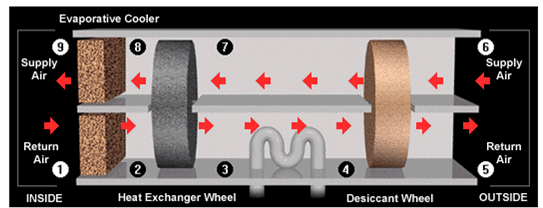SPRING 2010 - FALL 2010
The starting point of this project consisted of defining our goals; this could only be reached by reasonable initial assumptions regarding weather conditions in San Diego. Given the complexity of the system, numerous sources had to be consulted and studied. After establishing the setting the reader is ready to enter in the details of the system, which are explored in the design and concept section. The theory behind the ventilation cycle is the first part to be explained and it follows by providing a description of Prototype 1. Subsequently, a description and analysis of Prototype 2 is provided. The results section summarizes key findings of each device, and leads to the final section of this report, which addresses the conclusions of the project including project results, weaknesses, strengths, aspects that remain to be conducted, and possible applications for the device.
A mathematical model that describes the performance of the different parts of the system was obtained to the best of the teamís ability. Based on this model we strived to size the different parts of the system to work interdependently. The design of this system called for individual testing for each part, in order to be able to compare the different coefficients of performance to the mathematical model, and make necessary improvements. A cooling load could not be determined because the cooling space has yet to be defined, however we can be assume that it will be relatively small. On this note, our goal is to produce a device for further experimentation and analysis, in order to determine the feasibility of building a commercial prototype with greater cooling capacity. This system is not meant for dry or arid regions and it would work best at moderately humid places but it was originally designed to work in humid tropical regions.

